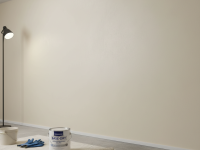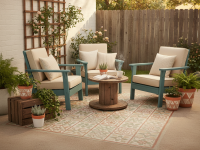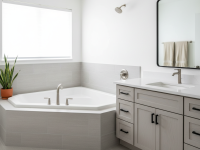Ever gazed at your child’s bedroom, a mere 3×4 meter space in your minimalist home, and thought, “How in the world can this tiny box be a sleeping haven, a creative play zone, and a quiet study nook all at once?” If you’re nodding along, trust me, you’re not alone. As someone who’s navigated the delightful challenge of designing functional, fun, and flexible spaces in compact homes, I know the struggle is real. But here’s the exciting part: a small space doesn’t mean small dreams or cramped living. In fact, it’s an incredible opportunity to get super creative and make every single inch count!
Designing a kid’s room in a minimalist 3×4 house isn’t just about fitting furniture; it’s about crafting an environment that adapts as your child grows, stimulates their imagination, and keeps clutter at bay. It’s about clever solutions, smart furniture choices, and a healthy dose of ingenuity. Let’s dive into some practical, tried-and-tested ideas that can transform that modest room into a multifunctional masterpiece your child will adore.
Embracing the Multifunctional Mindset: More Than Just a Room
The first step in tackling a small kids’ room is a shift in perspective. Instead of seeing it as “just a bedroom,” think of it as a dynamic hub with multiple zones. This means one piece of furniture might serve two or three purposes, and every surface has potential. From my own experience, trying to force traditional, single-purpose furniture into a small space is a recipe for disaster. We need to think vertically, horizontally, and even “behind the scenes.”
This approach isn’t just practical; it encourages a more organized and deliberate way of living, which is a cornerstone of minimalist principles. It teaches children from a young age that everything has its place and that creativity can thrive within boundaries.
Smart Furniture: The MVPs of Small Spaces
When you’re working with a 3×4 meter room, traditional beds and bulky wardrobes simply won’t cut it. We need furniture that works harder, not just takes up space. Here are some of my favorite recommendations:
Loft Beds and Bunk Beds: Elevate Your Design
- The Loft Bed Advantage: This is, hands down, the ultimate space-saver for a single child. By elevating the sleeping area, you immediately free up valuable floor space underneath. What can go there? A compact study desk with shelves, a cozy reading nook with beanbags, or even a mini play kitchen. I’ve seen setups where the entire play area is tucked neatly under a loft bed, complete with pull-out bins for toys.
- Bunk Beds for Siblings (or Sleepovers): If you have two children sharing the room, or if your child frequently has friends over, a bunk bed is a no-brainer. Look for models with built-in drawers in the steps or under the bottom bunk. Some even come with a pull-out trundle bed, offering three sleeping spots in the footprint of one!
- Integrated Storage: Many modern loft and bunk beds are designed with integrated shelving, desks, and wardrobes. Investing in one of these “all-in-one” units can be a game-changer, eliminating the need for separate furniture pieces.
Modular and Foldable Furniture: Adaptability is Key
- Modular Storage Cubbies: These can be stacked, rearranged, and added to as needed. They’re fantastic for toys, books, and even clothes. Some come with doors or drawers to hide clutter, maintaining that clean, minimalist look.
- Fold-Down Desks: A desk that folds flat against the wall wheot in use is pure genius. It provides a dedicated study surface during homework time but vanishes to create more play space afterward. Pair it with a foldable chair you can tuck away.
- Storage Ottomans/Benches: These serve multiple purposes – extra seating, a surface for books or games, and hidden storage for toys, blankets, or even out-of-season clothes. They are incredibly versatile and easy to move around.
Verticality is Your Best Friend: Don’t Forget the Walls!
When floor space is limited, the only way to go is up! Every wall in your 3×4 room is a blank canvas just waiting to be utilized. I often tell people to look at their walls not just as barriers, but as prime real estate for storage and display.
- Floating Shelves: Install them above the bed, desk, or even around the door frame. They’re perfect for books, small toys, display items, and decorative pieces. Varying the length and height can add visual interest.
- Wall-Mounted Storage Units: Think slim cabinets, open cubbies, or even spice racks repurposed for holding small books or art supplies. IKEA’s TROFAST system, for example, is incredibly popular for a reason – it’s robust, customizable, and great for toys.
- Pegboards: These are incredibly versatile and I love them for kids’ rooms! You can hang baskets, hooks, and shelves on a pegboard to organize art supplies, small toys, headphones, or even display a child’s collection. The best part? It can be reconfigured as their needs and interests change.
- Vertical Drawer Systems: If you can find or build narrow, tall drawer units, they offer a lot of storage without taking up much width.
Clever Storage Solutions: Hiding the Clutter, Keeping the Joy
Let’s be honest, kids come with a lot of stuff. The key to a functional and calm small space is having designated homes for everything. The less visual clutter, the more expansive the room will feel.
- Under-Bed Storage: If you don’t opt for a loft bed, maximize the space under a regular bed with roll-out drawers or storage bins. These are perfect for bedding, out-of-season clothes, or larger toys.
- Built-In Wardrobes/Recessed Storage: If your walls allow for it, consider recessing a wardrobe or shelving unit into the wall. This creates a flush, seamless look that doesn’t eat into the room’s precious width. Even a shallow built-in can make a huge difference.
- Toy Rotation Systems: This is a game-changer for small spaces! Keep only a portion of toys accessible at any given time. Store the rest in labeled bins in a closet, under the bed, or even in another room. Rotate them every few weeks. It keeps the room tidier and makes old toys feel new again.
- Over-the-Door Organizers: Perfect for shoes, small toys, accessories, or even school supplies. These don’t take up any floor or wall space.
- Storage Baskets and Bins: Invest in attractive, sturdy baskets and bins. They keep items contained and can be easily tucked onto shelves or into cubbies. Labeling them helps children know where things belong.
Defining Zones Without Walls: The Art of Illusion
In a 3×4 meter room, you can’t exactly put up dividers. But you can create distinct zones using clever design tricks. This helps in mentally separating activities – sleep, play, study – even within the same small space.
- Area Rugs: A colorful rug can define a play area. A softer, neutral rug can ground the sleeping zone.
- Color Blocking with Paint: Use different paint colors or even wallpaper on specific wall sections to visually delineate areas. For example, a calm blue around the bed, and a brighter, more stimulating yellow or green in the play/study zone.
- Lighting: Use task lighting for the study area (a bright desk lamp), softer ambient lighting for the general room, and perhaps a fuightlight for the sleep zone. Lighting plays a huge role in setting the mood for different activities.
- Movable Screens/Curtains: For older children who crave a bit more privacy, a lightweight, movable screen or a ceiling-mounted curtain track can offer a temporary visual separation for the sleeping area.
Personalization & Playfulness: It’s Still a Kids’ Room!
While efficiency is key, don’t forget that this is a child’s space. It needs to reflect their personality and be a place they love. Even in a minimalist setting, there’s plenty of room for fun.
- Incorporate Their Interests: Use bedding, artwork, or a few well-chosen decorative items that reflect their favorite characters, animals, or hobbies.
- Removable Wall Decals: These are fantastic! They add personality without permanence and can be changed easily as your child’s interests evolve.
- Gallery Walls: Dedicate a section of a wall to displaying their artwork or favorite photos. This is a lovely way to personalize the space without adding clutter.
- Adaptability: Design the room to grow with your child. Choose furniture that is robust and versatile, and keep decorative elements flexible. Neutral base colors allow for easy changes in accessories.
- Safety First: Always ensure that all furniture, especially loft beds and wall-mounted units, are securely anchored to the wall to prevent accidents. Keep pathways clear for safe movement.
The Minimalist Touch: Less is Truly More
Finally, remember the core principle of a minimalist house: less is more. This doesn’t mean sacrificing comfort or fun, but rather being intentional about every item you bring into the room.
- Declutter Regularly: Make it a habit to go through toys and clothes with your child every few months. Donate or discard what’s no longer used or loved.
- Choose Quality Over Quantity: Invest in well-made, durable furniture and toys that will last.
- Neutral Base with Pops of Color: Start with a neutral palette for walls and larger furniture items. Then, introduce color and personality through bedding, rugs, and decorative accessories that can be easily swapped out.
Conclusion: Big Possibilities in a Small Footprint
Designing a multifunctional kids’ bedroom in a 3×4 minimalist home is an exciting challenge that can lead to incredibly iovative and beautiful solutions. It requires a bit of plaing, a smart approach to furniture and storage, and a willingness to think outside the traditional box. By embracing vertical space, choosing versatile furniture, and defining zones, you can create a room that is not only highly functional but also a true haven for your child – a place where they can sleep, play, learn, and dream, all within their own cozy, curated corner of the world. So, roll up your sleeves, get inspired, and watch that small space unlock its huge potential!
1. Image 1: A brightly lit, modern minimalist kids’ bedroom (3x4m) featuring a sleek, light-wood loft bed with a cozy reading nook and integrated shelves underneath. The walls are painted in a soft, neutral tone with a subtle color-blocked accent. There’s a small, round area rug defining the play zone, and a pegboard on one wall showcasing art supplies and small toys.
2. Image 2: A close-up of a multifunctional bunk bed in a small room. The bottom bunk has pull-out drawers for storage, and the top bunk features a small, integrated desk with a fold-down chair. There are floating shelves above the desk, holding books and minimalist decor. The overall aesthetic is clean and practical.
3. Image 3: A well-organized kids’ room demonstrating vertical storage. One wall is covered with various wall-mounted storage solutions: slim cubbies, open shelves filled with books, and a neat system of clear bins for toys. Everything is neatly labeled, maintaining a clean and clutter-free look.
4. Image 4: A cozy and inviting minimalist kids’ room, showing clear zoning. A soft, plush rug defines the play area in the center of the room. The sleeping area has subtle, warm lighting, while a small, dedicated study desk by the window has brighter task lighting. The overall feeling is calm and well-structured, despite the small size.




